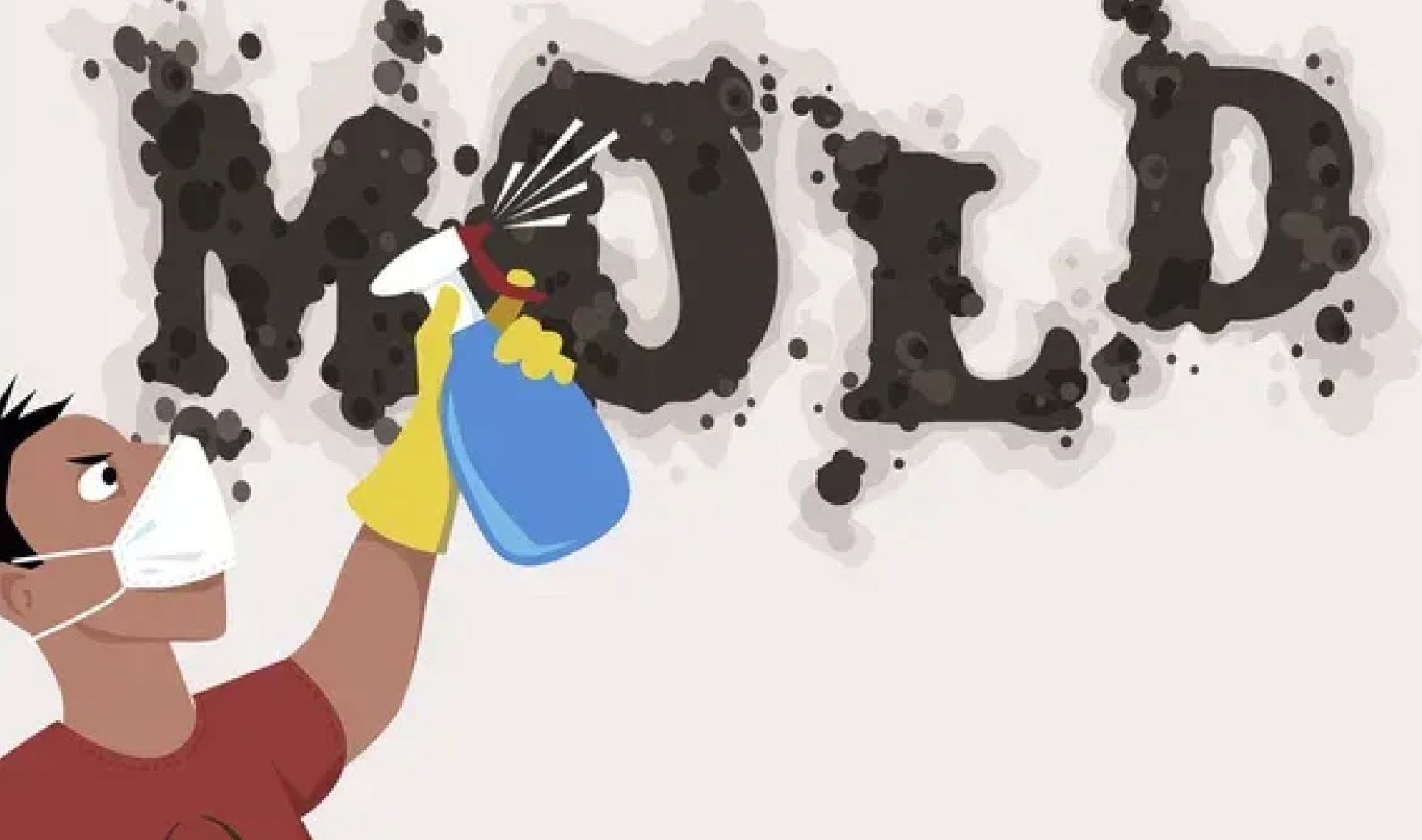Whether you want to call it yucky, blegh, or just plain gross, mold is not a fun topic, but if you are a tenant or homeowner, it is an important one. According to the Centers for Disease Control and Prevention, mold is a fungal growth that forms and spreads on various kinds of damp or decaying matter. Excess moisture is the primary cause of indoor mold, which reproduces by releasing tiny spores that float through the air and land in other locations. Settling on wet or moist surfaces, they can form new mold colonies.
No indoor space is completely free from mold spores. However, mold in residential property is a common and sometimes serious problem, causing various health issues including asthma, respiratory infections, breathing symptoms, and skin rashes, depending on the species.

You Control the Moisture, You Control the Mold
Since mold cannot be eradicated completely, steps should be taken to control it as much as possible by removing excess moisture. Simply wiping up visible mold, even with a bleach solution or other cleaner, will not eradicate it and does not address the cause of its growth.
If the excess moisture is caused by water vapor (think long, hot showers), mold is best controlled by running an exhaust fan for 10-20 minutes after showering and opening doors and windows. Exhaust fans are sized by CFM (cubic feet per minute) of air evacuation based on the room’s square footage. Home builders and contractors often undersize exhaust fans to reduce costs but you can easily check the CFM rating of your fan by taking off the cover; however, we only recommend this for homeowners. Tenants should contact the property manager.
If the excess moisture is caused by a broken or leaking pipe or a flood event, simply drying out the area is probably not sufficient. Homeowners should contact a mold remediation contractor or their insurance company immediately. Often a single flood event will require removing and replacing sheetrock, insulation, and treating or replacing subflooring and wall studs.
Be aware of the warning signs of mold — visible mold, water damage, damp materials, or mold odor. If you are a tenant, you should alert your landlord immediately. Homeowners should contact a mold remediation contractor.
Mold Testing and Remediation
The presence of mold is tested by taking several air samples with specialized collection equipment in different areas of the home. Samples from the problem site are compared against the baseline samples in other areas and sent to a laboratory to test for elevated spore levels.
For property owners with confirmed findings of elevated mold levels, it is imperative to begin remediation immediately. Depending on the event causing the mold, the remediation may be covered by insurance. But even if not covered, failing to remediate mold will exacerbate problems and likely run afoul of Landlord-Tenant law regarding habitability of rental units.
Neither California nor Montana has state regulations about mold inspection, assessment, or remediation. However, contractors performing mold remediation repairs must be licensed by their respective states. Mold remediation contractors may also be trained and certified by private organizations that specialize in mold remediation.
This post was written by Andy Kucera, an owner of Valley Vista Properties, California licensed attorney, and real estate broker in California and Montana. Andy can be reached at [email protected].


